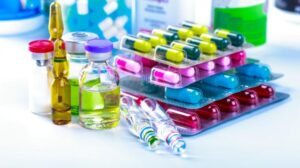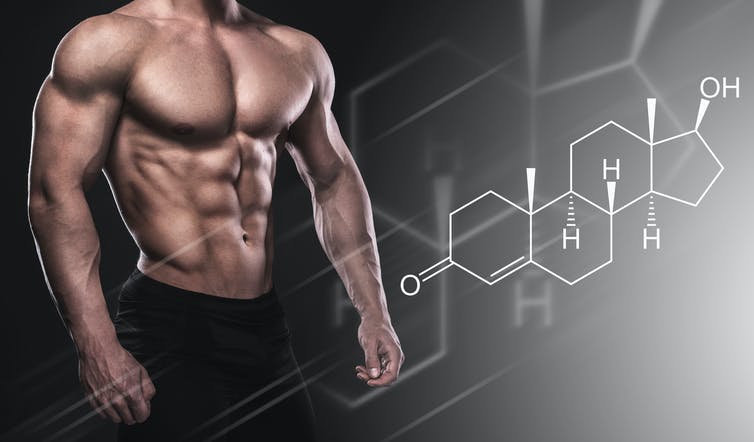Latest News
Anabolic Steriods
What is Anabolic Steriods
Anabolic steroids, additionally referred to all the more appropriate as anabolic-androgenic steroids (AAS), are steroidal androgens that incorporate regular androgens like testosterone just as manufactured androgens that are basically related and have comparative impacts to testosterone. They are anabolic and increment protein inside cells, particularly in skeletal muscles, and furthermore have differing degrees of androgenic and virilizing impacts, including enlistment of the turn of events and upkeep of manly auxiliary sexual qualities, for example, the development of facial and body hair. The word anabolic, alluding to anabolism, originates from the Greek ἀναβολή anabole, “that which is hurled, hill”. Androgens or AAS are one of three sorts of sex hormone agonists, the others being estrogens like estradiol and progestogens like progesterone.

Anabolic Steroid Types
Steroids are grouped into Oral Steroids and Injectable Steroids. They further expanded as follows
Oral Steroids
- Anadrol (oxymetholone)
- Anavar (oxandrolone)
- Dianabol (methandienone )
- Winstrol (stanozolol)
- Restandol (testosterone undecanoate)
Injectable Steroids
- Deca-Durabolin (nandrolone decanoate)
- Durabolin (nandrolone phenpropionate)
- Depo-Testosterone (testosterone cypionate)
- Agovirin (testosterone propionate)
- Retandrol (testosterone phenylpropionate)
- Equipoise (boldenone undecylenate)
What Are the Common Street Names?
Slang words for steroids are hard to find. Most people just say steroids. On the street, steroids may be called roids or juice. The scientific name for this class of drugs is anabolic-androgenic steroids. Anabolic refers to muscle-building. Androgenic refers to increased male characteristics. But even scientists shorten it to anabolic steroids.
How Are They Used?
Some steroid users pop pills. Others use hypodermic needles to inject steroids directly into muscles. When users take more and more of a drug over and over again, they are called “abusers.” Abusers have been known to take doses 10 to 100 times higher than the amount prescribed for medical reasons by a doctor.

Many steroid users take two or more kinds of steroids at once. Called stacking, this way of taking steroids is supposed to get users bigger faster. Some abusers pyramid their doses in 6-12-week cycles. At the beginning of the cycle, the steroid user starts with low doses and slowly increases to higher doses. In the second half of the cycle, they gradually decrease the number of steroids. Neither of these methods has been proven to work.
Side effects of Steriods
The main short-term side effects of steroids are acne, stomach irritation, and an increased risk of infection. Side effects can be more severe with long-term administration.
Short-term side effects of steroids:
Acne
Steroids can increase oil production by sebaceous glands and make them more susceptible to infection. Acne in people who take steroids is most commonly found on the chest but is also seen on the back, shoulders, neck, and face.
Stomach irritation
Steroids can irritate the lining of the stomach by inhibiting prostaglandins – these are substances that help protect the stomach lining. Excessive irritation can lead to stomach ulcers. Oral steroids should be taken with food and other medicines that also irritate the stomach, such as nonsteroidal anti-inflammatory drugs (NSAIDs), avoided.
Increased risk of infection
Steroids decrease inflammation by suppressing the immune system, which means our immune system is compromised and not as effective at protecting us against infection. Symptoms of an infection may not be as obvious or typical while you are taking steroids.
Other short-term side effects
Blurred vision and easy bruising have been reported with steroid use. They may also cause difficulty sleeping, especially if they are taken too late in the afternoon/evening.
Long-term side effects of steroids:
If steroids are taken daily, for long periods of time, they can cause adrenal gland suppression. This is when your body stops producing cortisol by itself.
Prolonged use has also been associated with cataracts and glaucoma, immunosuppression, muscle wasting, bone changes, fluid shifts, and personality changes. High blood pressure, an increased appetite leading to weight gain, menstrual irregularities and an increased growth of body hair (particularly facial hair in women) has also been reported. Skin discoloration, thinning, and easy bruising can occur after topical steroids are applied repeatedly to the skin.
Steroids may also precipitate sudden mood swings, cause fluid retention, worsen diabetes, and lead to a condition known as Cushing syndrome; a condition characterized by a moon face and a buffalo hump (a large fat deposit between the shoulders).
Steroids are drugs that reduce inflammation by mimicking the hormone cortisol that is produced by our adrenal gland. Steroids may also be called corticosteroids or cortical steroids. There are three main types: mineralocorticoids, glucocorticoids, and sex hormones.

